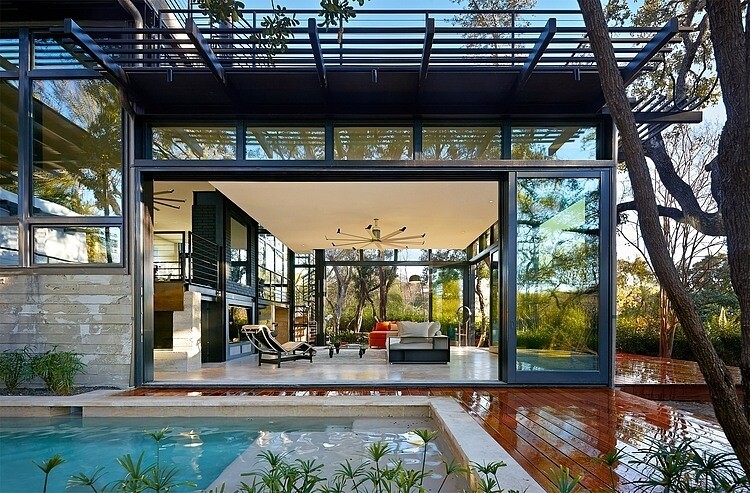Ever seen those windows with glass slats that open like louvers? Those are jalousie windows—a retro classic that’s still found in many sun-soaked and mid-century homes.
You might love their look or wonder if they’re still practical today. We’ll give you the friendly lowdown on what they are, their pros and cons, and whether they’re a good fit for your home. Let’s dive in!
What Are Jalousie Windows?
Jalousie windows (pronounced jal-uh-see), also known as louver windows or crank windows, are made of multiple horizontal glass slats set in a metal or aluminum frame. A simple crank mechanism opens and closes all the slats simultaneously, allowing you to control ventilation easily.
They became popular in the 1940s–1970s, especially in warmer climates like Florida and Hawaii, thanks to their ability to maximize airflow while keeping rain out. You’ll often spot them in:
Mid-century modern homes
Sunrooms and porches
Tropical and coastal-style buildings
Budget-friendly and DIY projects
While less common in new construction today, they’ve retained a loyal following among homeowners who value function and retro charm.
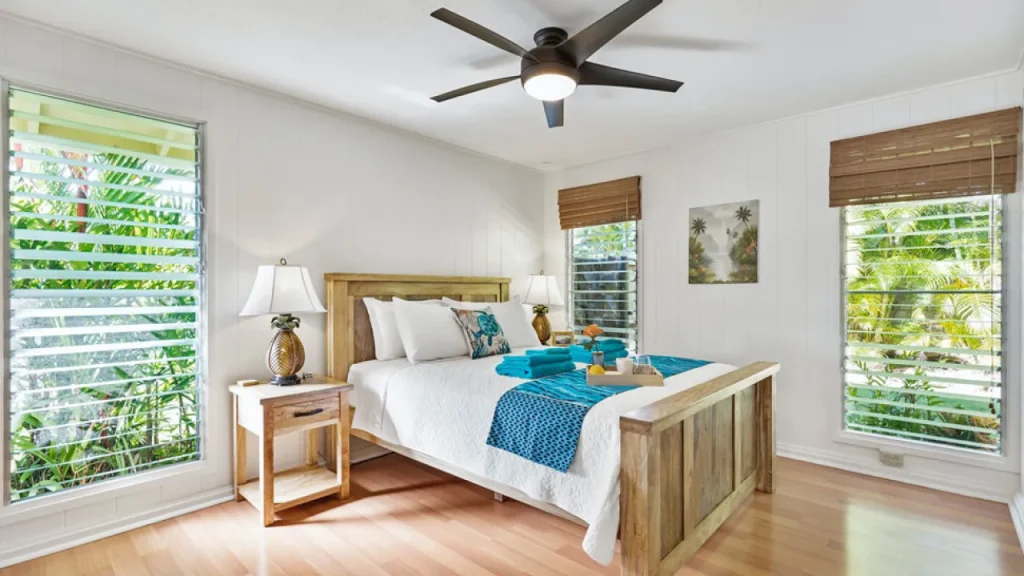
What Are the Benefits of Jalousie Windows?
Jalousie windows, with their distinctive horizontal slats, offer several advantages that make them a popular choice for specific applications:
Enhanced Ventilation
One of the standout features of Jalousie windows is their ability to provide excellent ventilation. The adjustable slats allow you to control the amount of airflow, making them ideal for climates where you want to maximize natural breezes. You can angle the slats to let air in while keeping rain out, which is a huge plus. Plus, with glass slats, they let in a good amount of natural light. It’s like having adjustable ventilation and lighting all in one .
Compact and Space-Saving Design
Jalousie windows are great if you’re tight on space. Because they open outward, they don’t take up any interior room. This makes them a good choice for small rooms or areas where you don’t want a window swinging into your living space. Their design is simple and functional, making them a practical option for many homes. They are especially useful in places where a traditional window might be too bulky .
Aesthetic Appeal
There’s something about Jalousie windows that evokes a certain retro charm. They can add a unique touch to your home’s exterior, especially if you’re going for a mid-century modern or tropical vibe. The horizontal slats create a distinctive look that sets them apart from other window styles. Plus, they offer a clear view of the outdoors when fully opened, connecting your indoor and outdoor spaces. The aesthetic is definitely a selling point for some people .
Simple Repairs
Jalousie windows are known for their easy repairs. If a slat gets damaged, you can usually replace it yourself without having to replace the entire window. This can save you a lot of money and hassle compared to repairing other types of windows. Replacing a slat is a straightforward process, making Jalousie windows a practical choice for homeowners who like to handle minor repairs themselves.
What Are the Drawbacks of Jalousie Windows?
While Jalousie louver windows offer several benefits, they also come with their fair share of drawbacks. Understanding these limitations is crucial to determining if they’re the right choice for your home.
Security Concerns
Their basic locking mechanism and external accessibility make them vulnerable to intrusion. They’re not recommended for ground-level installations in high-risk areas.
Poor Energy Efficiency
The multiple slats create numerous gaps where air can escape. You’ll likely experience higher heating costs in winter and reduced cooling efficiency in summer.
Limited Noise Insulation
The design offers minimal soundproofing. If you live near a busy street or in a noisy neighborhood, these windows won’t provide much acoustic protection.
Air Leakage
Even when closed, you might notice slight drafts around the edges of the slats. Weather stripping can help, but it’s not a perfect solution.
How Do Jalousie Windows Compare to Other Window Types?
When deciding on the best window type for your home, it’s essential to understand how Jalousie louver windows compare to other popular options.

Jalousie vs. Casement Windows: Casement windows outperform Jalousie windows in security, insulation, and weather resistance. However, Jalousie windows excel in providing adjustable ventilation, making them ideal for areas that prioritize airflow.
Jalousie vs. Sliding Windows: Sliding windows offer better security and insulation than Jalousie windows, but Jalousie windows provide more precise control over ventilation. Sliding windows are easier to operate but lack the same level of air adjustment that Jalousie windows offer.
Jalousie vs. Awning Windows: While both window types are great for ventilation, awning windows are more weather-resistant and provide better energy efficiency. Jalousie windows, on the other hand, allow more airflow even when partially closed.
Jalousie vs. Double-Hung Windows: Double-hung windows are generally more energy-efficient, secure, and aesthetically versatile. Jalousie windows offer less insulation but can provide superior ventilation, making them a better choice for areas that need consistent airflow.
Feature Comparison Table
| Feature | Jalousie Windows | Casement Windows | Sliding Windows | Awning Windows | Double-Hung Windows |
|---|---|---|---|---|---|
| Ventilation | ⭐⭐⭐⭐⭐ | ⭐⭐⭐ | ⭐⭐⭐⭐ | ⭐⭐⭐⭐ | ⭐⭐⭐ |
| Weather Resistance | ⭐⭐⭐ | ⭐⭐⭐⭐⭐ | ⭐⭐⭐⭐⭐ | ⭐⭐⭐⭐⭐ | ⭐⭐⭐⭐ |
| Energy Efficiency | ⭐⭐ | ⭐⭐⭐⭐ | ⭐⭐⭐⭐⭐ | ⭐⭐⭐⭐⭐ | ⭐⭐⭐⭐⭐ |
| Security | ⭐⭐⭐ | ⭐⭐⭐⭐⭐ | ⭐⭐⭐⭐ | ⭐⭐⭐⭐⭐ | ⭐⭐⭐⭐⭐ |
| Maintenance | ⭐⭐⭐⭐⭐ | ⭐⭐⭐ | ⭐⭐⭐ | ⭐⭐⭐ | ⭐⭐⭐ |
| Cost | ⭐⭐⭐⭐⭐ | ⭐⭐⭐⭐ | ⭐⭐⭐⭐ | ⭐⭐⭐⭐ | ⭐⭐⭐ |
When to Choose Jalousie:
You prioritize maximum airflow above all else
You’re working with a limited budget
The windows will be in low-security areas (e.g., above ground level)
You live in a mild climate without extreme temperatures
When to Choose Another Style:
Energy efficiency is your top concern
You need enhanced security features
You want better noise reduction
Your area experiences severe weather
How Can Jalousie Windows Be Used in Modern Home Design?
Think jalousie louvre windows are just for retro renovations? Think again! Today’s designers are finding clever ways to incorporate these vintage classics into contemporary spaces. Here’s how you can make them work in your modern home:
Sunrooms and Porches
In sunrooms or screened-in porches, Jalousie windows are an excellent choice. They allow for maximum airflow while still offering some protection from the elements. You can adjust the slats to control the amount of breeze coming in while letting in plenty of natural light. This makes them ideal for spaces where you want to feel connected to the outdoors, without the full exposure to weather conditions. They can also be used to enhance the natural look of your porch, creating a rustic or vintage vibe.
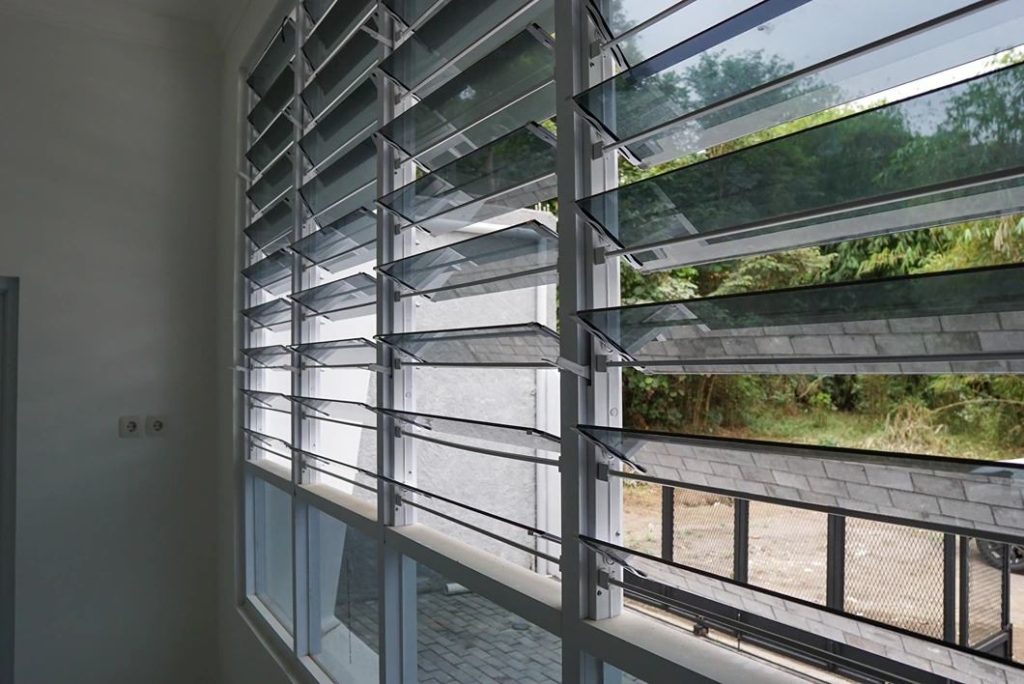
Tropical and Coastal Homes
Jalousie windows are a perfect fit for tropical or coastal homes, where ventilation and airflow are key. Their ability to catch even the slightest breeze makes them ideal for homes near the ocean or in warm climates. In these settings, Jalousie windows help cool down the space naturally, reducing the need for air conditioning and creating an open, airy atmosphere. Pairing them with other materials like wood or bamboo can complement the laid-back, nature-inspired aesthetic of beach or resort-style homes.
Bathrooms and Kitchens
Modern jalousie windows are commonly used in bathrooms and kitchens, where ventilation is important to prevent humidity build-up. In a bathroom, they help to reduce moisture and keep the air fresh, while also providing a degree of privacy with the ability to adjust the slats. In kitchens, they allow for natural light to flood in, creating a bright and welcoming environment. Both spaces benefit from the adjustable ventilation, which can be particularly useful when cooking or showering.
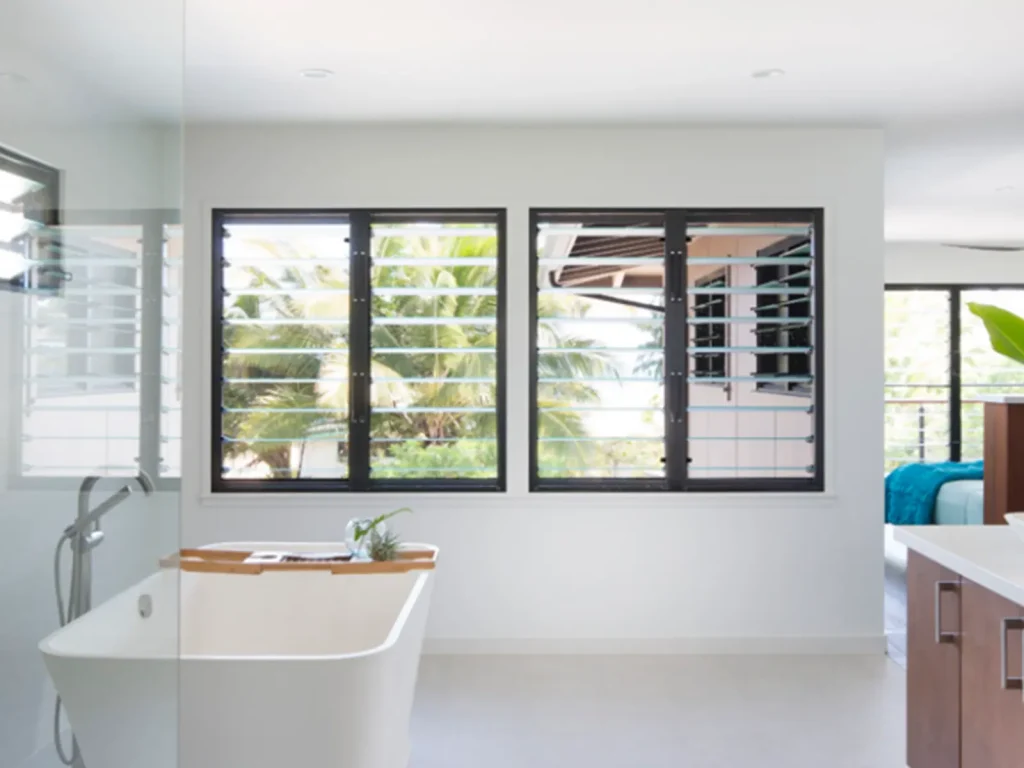
Retro or Industrial Designs
If you’re going for a retro or industrial design theme, Jalousie windows can add character and authenticity. Their vintage appeal can complement exposed brick walls, metal fixtures, and other industrial design elements. The raw, utilitarian look of Jalousie windows pairs well with minimalist or industrial interiors, adding a touch of vintage charm to the overall design. Whether you’re decorating a loft or updating a historical home, Jalousie windows can fit seamlessly into the aesthetic.
Interior Dividers or Room Partitions
Jalousie windows can also be used creatively as room dividers or partitions. In open-concept homes, they can be installed between spaces to allow for airflow while still providing some separation. The slatted design offers a unique way to create privacy while maintaining a sense of openness. Whether between a living room and dining area or in a shared bedroom and home office, Jalousie windows can help divide spaces without making the room feel closed off.
How Much Do Jalousie Windows Cost?
Jalousie windows remain one of the most affordable window options on the market. You can expect to pay between $150 to $400 for a standard-sized operating unit, with custom sizes or upgraded materials reaching $600+. This makes them significantly less expensive than double-hung or casement windows, which often start at twice that price.
The real value of jalousie windows lies in their low maintenance costs and easy repairs. Unlike full-pane windows that require complete replacement if damaged, individual glass slats can be swapped out for just $20-$40. This modular approach saves both time and money long-term.
While Jalousie windows are less expensive upfront, their lower energy efficiency could result in higher utility bills over time, especially in extreme climates. If ventilation and light control are your primary goals, the cost may be worth it, but it’s important to weigh the long-term savings against the initial investment.
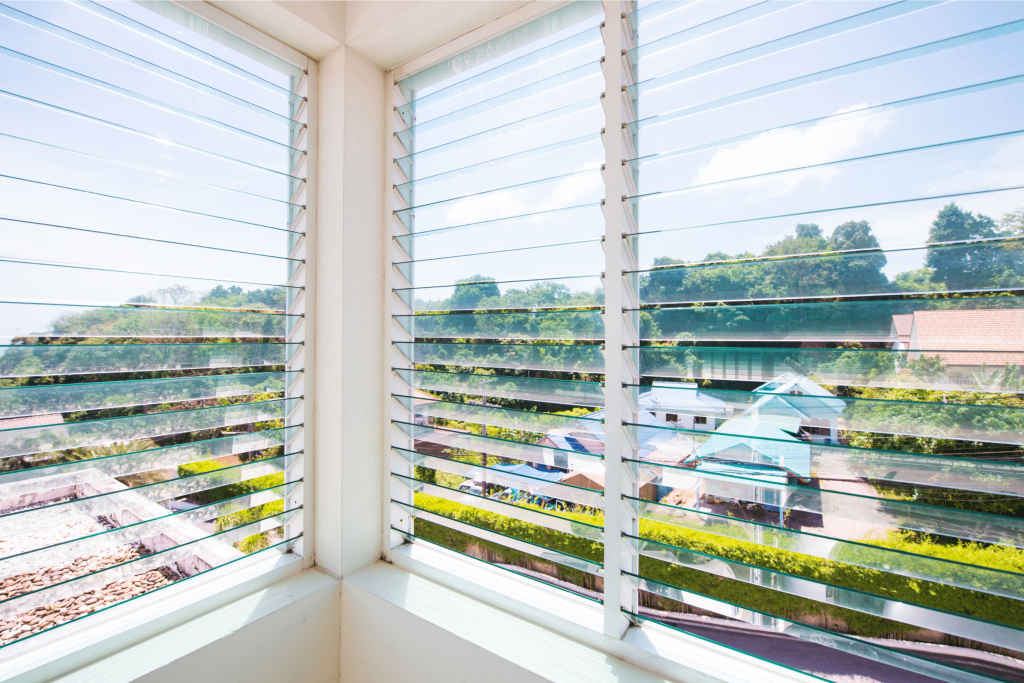
Are Jalousie Windows Still Worth It in 2025?
As we move further into 2025, Jalousie windows are becoming less common in modern homes due to advancements in window technology. However, they still have a place in certain situations. If you’re living in a mild climate where airflow and natural light are a priority, Jalousie windows can still provide excellent value. Their affordable cost and ease of use make them a practical choice for areas that don’t require the high energy efficiency or security offered by more modern window types.
That said, for homes in colder climates or places with extreme weather conditions, Jalousie windows may not be the best choice. Their poor insulation and tendency to let in drafts make them less ideal for energy-conscious homeowners. If security and energy efficiency are your top priorities, you might want to consider newer window options like casement or sliding windows, which provide better protection against the elements and higher efficiency.
Ultimately, whether Jalousie windows are still worth it depends on your specific needs, climate, and budget. They remain a solid option for those seeking affordable, adjustable ventilation, but may not be the best long-term investment for everyone.

Where to Buy Jalousie Windows?
Jalousie windows are still widely available at home improvement stores like Home Depot, Lowe’s, and Menards, offering standard sizes and materials. For more custom options, specialty window suppliers or online platforms like Amazon are great places to explore. If you’re looking for tailored solutions, custom window manufacturers can provide specific sizes and high-quality materials.
If you’re considering Jalousie windows for your project, PA Home can help with high-quality custom solutions tailored to your needs. Contact us for quotes, design assistance, and expert guidance on selecting the perfect windows for your home.
FAQs about Jalousie Windows
Jalousie windows are typically operated with a crank or lever that adjusts the horizontal slats. By turning the crank, you can open or close the slats to control airflow and light.
Jalousie windows are generally less secure than other window types because the slats can be easily broken or manipulated. Additional security measures may be needed.
Jalousie windows are generally not considered energy efficient. The slats allow air to pass through easily, which can result in higher heating and cooling costs. For better energy efficiency, consider double-glazed windows or other modern window types.
Jalousie windows are not ideal for cold climates as they offer poor insulation. The slats allow cold air to enter, making them less efficient for keeping indoor spaces warm in winter. Consider more insulated window options if you live in a colder area.
Jalousie windows typically use standard glass or tempered glass. Some models may offer impact-resistant glass for enhanced durability, especially in storm-prone areas.


